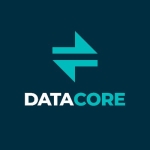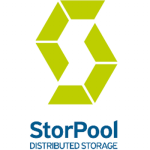What is our primary use case?
We use StarWind as redundant, reliable, and fast storage for our two-node cluster in a Hyperconverged Environment. The cluster is a cost-effective way to create a reliable and scalable environment by utilizing all the available hardware while keeping complexity to a minimum.
StarWind serves as storage for our Hyper-V appliance, ranging from databases to fileservers, which are all critical for the company. The storage has a size of around 70 Terabytes, and all traffic is routed through a redundant switch stack of two units.
How has it helped my organization?
StarWind's task is to provide a reliable, fast, and redundant storage solution for our virtual machines while keeping cost and complexity as low as possible. At the same time, it managed challenges in a two-node environment, such as the feared split-brain scenario.
With an uptime of 384 days, StarWind has improved overall server reliability. Our downtime over the year went from two reboots a week for maintenance to zero (in combination with the cluster).
Another improvement is the L1 and L2 cache, which boosts the overall performance of all VMs.
The overall biggest impact on the company, and especially the IT department, is the reduced time investment in maintaining the platform. StarWind has been a "set-up and forget" solution over the past year and already paid itself in the hours it has saved compared to the previous solution.
What is most valuable?
Three features were extremely important for us as a result of using StarWind since its setup:
Reliability and Maintainability. StarWind has been extremely reliable until now without any software-related downtime. Update-related reboots of the nodes were handled without any issues by StarWind and its Fast-Sync technology, which synchronizes data in the background without the need for a full sync.
Performance. Utilizing StarWind with its L1 and L2 Cache helped us boost a variety of file sizes, ranging from databases to renderings. Additionally, StarWind has a market-leading performance in throughput. Benchmarks in our environment showed a transfer of over 750 MB/s from a Windows Fileserver VM to a client device through a 10Gbit connection.
Community. The StarWind Customer Support was excellent, and it helped us clear any remaining questions regarding the setup. In our case, it was the setup of the SSD cache. A StarWind Technician offered us a personal support session with many follow-ups.
What needs improvement?
While we had little to no issues in setting up StarWind and received excellent support from the StarWind technicians, we would have appreciated a clearer guideline for a setup with the free version of StarWind Management Console or, in other words - for the setup with the PowerShell.
Another thing we found out afterward is that StarWind offers several free software solutions to benefit the performance of server infrastructures. One of them is StarWind iSCSI Accelerator/Load Balancer. We would like to ask StarWind to give a more thorough implementation guideline for such free solutions during the setup of storage infrastructure.
Buyer's Guide
StarWind Virtual SAN
March 2025
Learn what your peers think about StarWind Virtual SAN. Get advice and tips from experienced pros sharing their opinions. Updated: March 2025.
849,190 professionals have used our research since 2012.
For how long have I used the solution?
I've used the solution since May 2021.
What do I think about the stability of the solution?
StarWind has been pretty much active for the past year without one error or failure. Server maintenance during office hours and the synchronization afterward have never been an issue. No corruption of the storage, no VM crash, nor split brain has occurred in our two-node setup up until now. The heartbeat interfaces are very reliable and show an error through the Management Console when they are down.
What do I think about the scalability of the solution?
One of the main reasons we bought StarWind was the scalability of the storage. We plan the storage in our Hyperconverged Infrastructure through the addition of storage arrays. Since we have bought the unlimited storage package from StarWind, we are confident that this task will not be an issue.
How are customer service and support?
The customer support was excellent. We initially opened a post on the official StarWind Support page and received a response from a StarWind technician within two hours. By the end of the week, we had a private support session with him where he solved our issue and checked our config for any weaknesses. Overall great experience, and of the reasons we will be staying with StarWind.
How would you rate customer service and support?
Which solution did I use previously and why did I switch?
We did not use another storage solution like StarWind. Rather, we used an array of NAS Servers, which served a combined iSCSI storage. This approach is more professional and in line with the industry.
How was the initial setup?
The initial setup was relatively straightforward. The manual was up to date and with images. The only complaint I have is that the guideline is mostly tailored to the paid version of the StarWind Management Console, and for the free version, you need to use the PowerShell templates. The manual should address them more.
What about the implementation team?
We implemented mainly in-house with the exception of the support of a technician, as mentioned in the next field.
What was our ROI?
While I can not give an exact number, compared to our old setup and the maintenance we put in, the ROI should be over 100%.
What's my experience with pricing, setup cost, and licensing?
Through StarWind, in combination with HCI, we managed to reduce our overall hardware costs by about 50% through the avoidance of additional servers and software licensing. My recommendation is to utilize the community when setting up StarWind, which is a very good and strong point that speaks to StarWind and is also one of the main reasons we will stay with them.
Which other solutions did I evaluate?
Yes, we evaluated StorMagic before deciding on StarWind.
What other advice do I have?
When setting up StarWind, it is fine to experiment with the config file; however, do back them up incrementally. Take your time in setting up a redundant infrastructure and meet hardware requirements (such as redundancy for Sync and Heartbeat Interfaces). Having solid ground to set up StarWind helped us to have a headache-free solution in the end. But that should be self-explanatory.
Which deployment model are you using for this solution?
On-premises
Disclosure: I am a real user, and this review is based on my own experience and opinions.

















